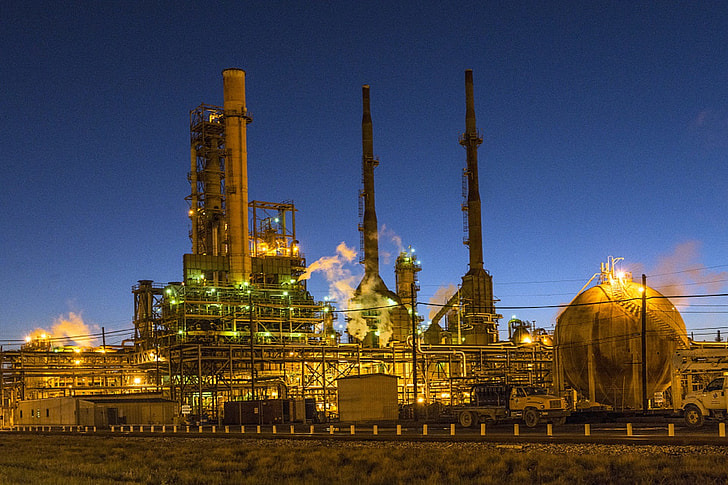In an industry as pivotal and complex as oil and gas, understanding the regulatory framework is not just a requirement but a necessity for success. The intricate balance between operational efficiency, environmental stewardship, and worker safety hinges largely on adhering to a diverse array of regulations. This article delves into the multifaceted world of regulations in the oil and gas industry, particularly focusing on how these rules shape construction activities within this sector.
What Are the Key Regulations Governing Oil and Gas Construction?
When discussing oil and gas construction, it’s vital to recognize the tapestry of regulations that govern this arena. This includes a mix of local, national, and international guidelines that dictate every aspect of construction, from initial planning to final execution.
Local Regulations: These often pertain to zoning laws, municipal standards, and community safety requirements.
National Regulations: Encompass broad policies set by governmental bodies, covering aspects like labor laws and national safety standards.
International Regulations: Include agreements and treaties that impact multinational projects and cross-border operations.
In this intricate regulatory environment, oil and gas companies such as Pheasant Energy must navigate a maze of rules that can vary significantly depending on the project’s location and scope.
How Do Environmental Regulations Impact Construction Projects?
Environmental considerations are at the forefront of oil and gas construction. Regulations here are not just obligatory but are critical in safeguarding our planet. Understanding these rules is essential in planning and executing projects that are both efficient and eco-friendly.
Importance of Environmental Impact Assessments (EIA)
EIAs play a pivotal role in project planning, ensuring that potential environmental impacts are thoroughly assessed and mitigated. These assessments involve detailed analysis of how a project might affect local ecosystems, water quality, air pollution levels, and more.
Emission Standards and Construction
Adhering to emission standards is another crucial aspect. These standards dictate permissible levels of various pollutants, ensuring that construction activities do not exacerbate air quality issues.
What Safety Regulations Must Be Adhered to in Oil and Gas Construction?

Safety is paramount in the oil and gas industry, and numerous regulations are in place to protect workers and the public. These rules cover a broad spectrum, from personal protective equipment (PPE) requirements to protocols for handling hazardous materials.
Occupational Safety and Health Administration (OSHA) Standards
OSHA standards form a significant chunk of safety regulations. They stipulate various requirements for construction sites, including guidelines for machinery operation, hazardous material handling, and emergency response procedures.
Emergency Response and Preparedness
Being prepared for emergencies is not just prudent; it’s often mandated by law. This encompasses having detailed response plans, training workers on emergency procedures, and ensuring access to necessary safety equipment.
How Do Regulations Affect the Choice of Construction Materials?
Regulations significantly influence the selection of materials used in construction. This choice is governed by factors such as fire safety standards, environmental impact, and durability requirements.
Fire Safety and Material Selection
Fire safety regulations often dictate the use of specific materials that are less prone to ignition or that can withstand high temperatures without compromising structural integrity.
Regulations on Hazardous Materials in Construction
There’s also a need to be cognizant of the regulatory constraints surrounding hazardous materials. This includes understanding which materials are deemed hazardous and the protocols for their safe use and disposal.
What Are the Financial Implications of Regulatory Compliance?
Regulatory compliance, while essential, comes with its financial implications. These range from direct costs like fees for permits and inspections to more indirect expenses like the investment in compliant technologies and training programs.
Cost of Non-Compliance
Non-compliance can be significantly more costly, leading to fines, project delays, and in severe cases, legal action. Understanding these risks is crucial in planning and budgeting for projects.
Funding and Financial Assistance for Compliance
Thankfully, there are avenues for financial assistance and funding available to help companies meet these regulatory requirements, especially for projects that aim to enhance safety or reduce environmental impact.
How Do Regulations Influence Construction Timelines?

Adhering to regulations can have a considerable impact on construction timelines. From the permitting process to compliance checks, each step needs careful planning and execution.
Permitting Process and Delays
The permitting process, in particular, can be time-consuming. Delays can occur due to various reasons, ranging from incomplete applications to regulatory changes.
Accelerated Construction Techniques Compliant with Regulations
In response, the industry has developed accelerated construction techniques that align with regulatory standards. These methods aim to expedite project completion while maintaining compliance.
What Are the Challenges in Implementing Regulatory Changes in Construction?
Implementing regulatory changes poses its own set of challenges. These can range from updating training programs to retrofitting existing equipment and infrastructure to meet new standards.
Training and Skill Development for Regulatory Compliance
Ensuring that staff are adequately trained and skilled to comply with the latest regulations is a continuous process, requiring investment in both time and resources.
Technological Adaptations for Compliance
Leveraging technology can aid in compliance. From advanced monitoring systems to automated compliance reporting tools, technology plays a crucial role in helping companies stay on top of regulatory requirements.
Case Studies: Successful Regulatory Compliance in Construction Projects
Analyzing case studies of successful regulatory compliance provides valuable insights. These examples showcase how companies can effectively navigate the regulatory landscape, often leading to safer, more efficient, and environmentally friendly construction practices.
Future of Regulations in the Oil and Gas Industry

The regulatory landscape is ever-evolving, driven by technological advancements, environmental considerations, and societal expectations. Staying abreast of these changes is crucial for companies in the oil and gas sector.
Conclusion
In conclusion, the world of regulations in the oil and gas industry’s construction sector is intricate and dynamic. Understanding and complying with these regulations is not just about adhering to the law; it’s about fostering a culture of safety, responsibility, and efficiency. As the industry evolves, so too will the regulatory framework, and staying ahead of these changes is crucial for continued success.